Author: Alan Weissberger
Nokia and Mavenir to build 4G/5G public and private network for FSG in Australia
Australian rural carrier Field Solutions Holdings (FSG) has selected Nokia and Mavenir as its primary technology vendors to build Australia’s fourth mobile network.
As part of the deal, the technology partners will supply 4G and 5G radio access networks and the mobile core network. Mavenir will provide 4G/5G Converged Packet core, as well as IMS voice and messaging services.
FSG plans to deliver 4G and 5G services in rural, regional and remote areas of the country. FSG will also be delivering private 4G LTE and 5G service offerings. FSG, has secured 5G spectrum holdings to ensure that rural, regional and remote Australia is not left behind in the rollout of 5G services.
FSG CEO Andrew Roberts, said FSG’s 5G service will cover 85% of Australia’s landmass.
“FSG has run a comprehensive 6-month RFP process to select the most appropriate technology partners for the rollout of the Regional Australia Network. FSG has selected these partners to ensure we have the cost-effective, future proof and globally proven technology platform needed to deliver Australia’s 4th mobile network.”
“The demand for private 4G and 5G networks is gaining momentum, FSG will be delivering cost-effective, carrier-grade private solutions for agri-business, mining and government. We expect to be announcing several private 4G and 5G private network deployments in the coming weeks,” said FSG CEO Andrew Roberts.
“Together with our new partners, Nokia and Mavenir, FSG is primed to deliver connectivity to regions, whilst offering capability for carriers to join the solution using Active Neutral host RAN, inbound roaming or ‘old school’ passive co-location on our purpose-built infrastructure,” Roberts added.
By embracing new models, the cost to deliver these solutions can be kept to a minimum, further supporting the committee’s desire to ensure that affordability is not forgotten. FSG are in the process of delivering 19 new place-based networks across Australia. These networks, comprising over 100 sites, each of which will be 4G and 5G capable, Neutral Host and Roaming ready when delivered in FY 23/24. “The Regional Australia Network is a dedicated network supporting rural Australia. Today, we operate Australia’s largest non-NBN fixed wireless network, which delivers fixed wireless broadband across rural, regional and remote Australia. The Regional Australia Network (RAN(TM)) will see these current and all new networks being enabled to delivery 4G and 5G data and voice services, fixed wireless broadband together with NB-IoT and CatM1 services”, Roberts stated.
FSG also said that the company is in the process of delivering 19 new “place-based” networks across Australia. These networks comprise more than 100 sites, each of which will be 4G and 5G capable, neutral host and roaming-ready when delivered in fiscal year 2023/24.
Anna Perrin, Nokia’s managing director for Australia and New Zealand, said, “As a world-leading provider of mobile technology, we have championed the development of Neutral Host networks around the world and we’re excited to bring this global expertise to our partnership with FSG. Supporting the creation of new and innovative solutions and business models for rural and remote coverage across Australia.”
“Mavenir is excited to partner with FSG to deliver a cost-effective, future proof and globally proven 4G/5G Cloud-native Converged Packet Core, IMS and messaging services to enable Australia’s 4th mobile network,” said Dereck Quinlan, Mavenir regional VP.
“Mavenir continues to drive forward with advanced cloud-native solutions that our customers and the industry recognise. Our Cloud-native Converged Packet Core solution embraces a disruptive technology architecture and business model that drive network agility, deployment flexibility, and service velocity,” Quinlan added.
Over the next 18 months, FSG, in partnership with the Australian Federal Government and mobile operator Optus, will be trialing the deployment of what it says is Australia’s first “Active Neutral Host” network. The neutral-host model enables FSG to build and operate infrastructure and a single set of electronics that all mobile network operators in Australia can utilize and will be ready for PSMB services, the company says.
“The more carriers subscribe to the model, the more valuable and impactful it is for Australian Rural communities and Australia as a whole. We look forward to welcoming the other Australian Carriers to the program, to make the neutral host model a reality for rural, regional and remote Australia,” Roberts added.
References:
https://www.bloomberg.com/press-releases/2022-02-20/selects-nokia-and-mavenir-as-technology-partners
FSG selects Nokia, Mavenir to rollout Australia’s fourth mobile network
Explaining the 5G SA Core network as distinct from 5G RAN (5G NR)
At this week’s ITU-R WP5D meeting, a Russian contribution (5D/998) proposed a liaison statement to Global Core Specification (GCS) Proponents to clarify 5G NSA (Non-Stand Alone) and 5G SA (Stand Alone) architectures in Recommendation ITU-R M.2150 (formerly know as IMT 2020.specs). Those architectures are described in 3GPP TR 21.915 (Summary of Rel-15 Work Items). While 5G NSA uses LTE for everything other than the RAN (5G NR), 5G SA introduces the 5G Core network which facilitates new 5G features and functions. 3GPP has decided NOT to liaison their 5G SA Core network TR’s to ITU-T for consideration as ITU recommendations for 5G non radio aspects.
Here’s the functional split between the 5G RAN (5G NR) and the 5G core network, as per 3GPP Release 15:
From 3GPP TR 21.915:
5.5.2 The 5G Core Network
5.5.2.1 Main Network Functions (NFs)
The AMF (Access and Mobility management Function) support UEs with different mobility management needs. It performs the following main tasks:
– The Non-Access Stratum (NAS) signalling termination;
– The NAS signalling security;
– The Access Stratum (AS) Security control;
– Inter CN node signalling for mobility between 3GPP access networks;
– Idle mode UE Reachability (including control and execution of paging retransmission);
– Registration Area management;
– Support of intra-system and inter-system mobility;
– Access Authentication;
– Access Authorization including check of roaming rights;
– Mobility management control (subscription and policies);
– Support of Network Slicing;
– SMF selection.
The SMF (Session Management Function) can support, together with the AMF, customized mobility management schemes such as “Mobile Initiated Connection Only” (MICO) or RAN enhancements like “RRC Inactive” state. It performs the following main tasks:
– Session Management;
– UE IP address allocation and management;
– Selection and control of UPF;
– Configures traffic steering at UPF to route traffic to proper destination;
– Control part of policy enforcement and QoS;
– Downlink Data Notification.
The UPF (User Plane Function) performs the following main tasks:
– Anchor point for Intra-/Inter-RAT mobility (when applicable);
– External PDU session point of interconnect to Data Network;
– Packet routing & forwarding;
– Packet inspection and User plane part of Policy rule enforcement;
– Traffic usage reporting;
– Uplink classifier to support routing traffic flows to a data network;
– Branching point to support multi-homed PDU session;
– QoS handling for user plane, e.g. packet filtering, gating, UL/DL rate enforcement;
– Uplink Traffic verification (SDF to QoS flow mapping);
– Downlink packet buffering and downlink data notification triggering.
The other main Network Functions are:
– The “Network Repository Function” (NRF): it provides support for NF services management including registration, deregistration, authorization and discovery.
– The “Network Exposure Function” (NEF): it provides external exposure of the capabilities of the network functions. External exposure can be categorized as Monitoring capability, Provisioning capability, Application influence of traffic routing and Policy/Charging capability.
– The “Unified Data Management” (UDM): the 5GC supports Data Storage architecture for Compute and Storage separation. The Unified Data Repository (UDR) is the master database. The Unstructured Data Storage Function (UDSF) is introduced to store dynamic state data.
5.5.2.2 Specificities of the 5G Core Network and associated NFs
5.5.2.2.1 Local hosting of services and Edge Computing
5.5.2.2.2 Network slicing
5.5.2.2.3 Unified access control
5.5.2.2.4 Support of 3GPP and non-3GPP access
5.5.2.2.5 Policy framework and QoS support
5.5.2.2.7 Other specific services
The following services are also supported by 5G SA core network:
– Short Message Service (SMS). This is supported by “SMS over NAS” (including over non-3GPP access).
– IP-Multimedia Subsystem (IMS) and its services, although, this might not be available in all initial 5G deployments. If IMS services are invoked by a UE connected to an IMS-less 5GS, this triggers a network-based handover towards an appropriate RAT and related EPS. This applies also to the support of IMS emergency services.
– Multi-Operator Core Network (MOCN), in which a RAN is shared by multiple core networks.
– Public Warning System (PWS). This is supported by either using Service-based interfaces between the Cell Broadcast Centre (CBC) Function (CBCF) and the AMF, or using an interworking function between the CBC and the AMF.
– Multimedia Priority Services (MPS). They are supported by MPS-specific exemptions for 5GS mobility management and 5GS session management.
– Mission Critical Services (MCS). They are supported by having a subscription in place for both 5G QoS profile and the necessary policies. Some standardized QoS characteristics are defined for MCS.
– PS Data Off. The 5G’s “PS data off” functionality is backward-compatible and provides Control Plane Load Control, Congestion and Overload control. This includes AMF Load balancing, AMF Load-rebalancing, TNL (Transport Network Layer between 5GC and 5G-AN) Load (re-)balancing, as well as AMF Overload Control, SMF Overload Control.
It should be noted that, in 5GS Phase 1 (3GPP Release 15), Location Services are optional and restricted to regulatory (emergency) services. 5GS Phase 2 (3GPP Release 16) was frozen in June 2020 without either URLLC in the RAN or URLCC in the Core specs completed.
References:
https://portal.3gpp.org/desktopmodules/Specifications/SpecificationDetails.aspx?specificationId=3389
IMT 2020: Concept of Global Core Specification (GCS) and Transposing Organization(s)
Move to distributed cloud networks, edge cloud and smart city services
Last week Akamai announced that it had acquired infrastructure-as-a-service (IaaS) platform provider Linode for $900 million. As a result it can bundle its edge cloud network with Linode’s services aimed at developers and their applications. Linode is a cloud computing specialist, offering its infrastructure-as-a-service platform across 11 global markets from data centres around the world. It operates its own network, with APIs, services and educational resources to enable developers and businesses to build, deploy, and scale applications more easily and cost-effectively in the cloud. The deal appears aimed at smaller developers and the bigger rival AWS.
“If you are a large enterprise and need the ability to customize your infrastructure, AWS is a good fit. But if you’re a small business owner or independent developer, having access to all of that advanced cloud technology comes at a cost: unnecessary complexity, risk of lock-in to Amazon’s ecosystem, and frequent billing surprises.”
AWS was also active last week in the edge cloud area, focusing on applications in need of single-digit millisecond latency. It’s completed 16 Local Zones in the US to serve customers such as Netflix and Fox and plans to add another 32 zones around the world in the next two years.
In Europe, 28 companies (including Deutsche Telekom, TIM, KPN, United Groep and Vivacom) confirmed plans for the Lighthouse Structura-X Project. That project will develop cloud services compatible with the aims of the EU’s Gaia-X project.
Canadian network operator Telus is partnering with Google Cloud to develop smart city services. Telus will rely on its 5G network and NXN Digital platforms.
The French start-up InterCloud raised EUR 100 million for its interconnection service supporting all the big cloud platforms.

References:
Credit Suisse: Metaverse to push data usage by 20 times worldwide by 2032
Even moderate usage of metaverse will increase global data usage by 20 times over a decade and firms such as India telcos Bharti Airtel and Reliance Jio are poised for “suitable benefits” from this surge, as per a Credit Suisse report released on February 17th. However, the Metaverse technology might not be mature till 2030.
“Internet traffic is already 80 percent video and has been growing at a 30 percent compound annual growth rate (CAGR). Our team projects that even modest metaverse usage could drive a further 37 percent CAGR in the next decade to 20x current data usage,” the Credit Suisse report said.
Cox Communications commits to symmetrical 10-Gig; many upgrade paths are possible
Cox Communications is the latest U.S. cable operator to formally announce a commitment to “10G,” the cable industry’s initiative focused on delivering symmetrical 10-Gig speeds over multiple types of access networks, including hybrid fiber/coax (HFC), fiber-to-the-premises (FTTP) and fixed wireless. Comcast is definitely on board that train, an executive told this author. Both Comcast and Charter Communications have announced lab tests of DOCSIS 4.0, and CableOne formed a partnership to pursue FTTP deployments and is preparing for DOCSIS 4.0 upgrades as it begins to boost the capacity of its HFC networks to 1.8GHz.
Cox estimates it has invested more than $19 billion in network and product upgrades over the past decade. The company promises to deliver on their 10G plan through a mix of upgrades to DOCSIS 4.0 on HFC and deployments of FTTP. The company has previously made some FTTP headway under a “Gigablast” initiative focused on extending 1-Gig capabilities across the bulk of its footprint. The privately held network operator said it will make a “multibillion-dollar annual infrastructure investment over the next several years to build a 10-Gigabit-capable, fiber-based network.”
“Connectivity is at the heart of everything we do. With new applications of technology from virtual reality classrooms to autonomous vehicles to the metaverse, people will require increased bandwidth to power their digital futures,” said Mark Greatrex, president of Cox Communications. “Included in this investment is our commitment to bring robust and reliable services to underserved communities and to be the internet provider customers count on to make those valuable connections a reality,” he added.
In addition to faster speeds, Cox also continues to provide secure and reliable WiFi connections covering the whole home. Cox’s Panoramic WiFi offers the latest gateway technology to deliver the most advanced experience with reliable speed, coverage, control and security that can be easily updated as technology changes. Customers also have personal control and security through the Panoramic WiFi app with Advanced Security, protecting every device connected to their network.
“Our intent is to remind the market that we are going to continue to aggressively invest in the communities we serve to maintain and build highly competitive networks,” a Cox spokesman wrote in an email to Telecompetitor.
Multiple Upgrade Paths are Possible:
A typical upgrade involves deploying XGS-PON equipment on the same infrastructure that supports widely deployed GPON technology. A key question for cable companies is whether to invest in DOCSIS 4.0 and in augmenting HFC infrastructure to obtain speeds that might reach 6 Gbps symmetrically, or whether it would be more prudent to deploy XGS-PON. All the major cable companies – including Cox – seem to be wrestling with that issue. XGS-PON can support speeds approaching 10 Gbps in both directions.

Supporting multi-gigabit symmetrical speeds is challenging for cable companies’ traditional hybrid fiber coax (HFC) infrastructure. Although the cable industry’s DOCSIS 3.1 and DOCSIS 4.0 specifications call for speeds up to 10 Gbps downstream, upstream bandwidth is more limited. DOCSIS 3.1 and DOCSIS 4.0 are just part of the CableLabs 10G initiative which aims to enable cable companies to support multi-gigabit speeds. Maximizing symmetrical speeds – and the number of customers who can obtain those speeds – will require other network upgrades, such as taking fiber closer to the customer and/or splitting nodes and moving to a DAA approach to reduce the number of customers served from each node.
It appears that not all cable operators will pursue DOCSIS 4.0 aggressively. Altice USA, as one example, announced this week it will accelerate its deployment of FTTP upgrades in both its Optimum and more rural-facing Suddenlink footprints. In Europe, Liberty Global will take multiple upgrade paths using both FTTP and HFC/DOCSIS 4.0, but building fiber overlays is the primary focus at Virgin O2 in the UK, Virgin Media (Ireland) and Telenet (Belgium).
…………………………………………………………………………………………………………………………………………………………………………………………………………
As a private company, Cox Communications does not publicize financial data, but the company has in the neighborhood of 6 million residential broadband customers, and nearly 7 million when business customers are included. A company official told Light Reading that Cox continues to grow total customers, with nearly all new customers taking broadband.
The Cox multi-gigabit press release references a “fiber-based network to more than 100,000 homes and businesses in communities near [the company’s] existing footprint.” In doing this, Cox said it expects to leverage federal funding opportunities – a potential reference to the BEAD program created in the infrastructure act adopted late last year, although the spokesman declined to confirm that.
Cox declined to say what percentage of its network will head down the road of D4.0 or all-fiber, but did note that its current investment commitment includes bringing broadband to underserved communities. Cox came away with a small piece of the first phase of the Rural Digital Opportunity Fund (RDOF) auction – about $6.63 million for 8,212 locations in nine states. The company said it hopes to partner with local cities and towns in pursuing these funding opportunities, but here, too, the spokesman declined to provide specifics.
This won’t be the first time Cox has pursued rural broadband opportunities. The company won funding in the 2020 Rural Digital Opportunity Fund to cover some of the costs of deploying fiber broadband in unserved rural areas, and the company received final authorization of that win in December.
About Cox Communications:
Cox Communications is committed to creating meaningful moments of human connection through technology. The largest private broadband company in America, we proudly serve nearly seven million homes and businesses across 18 states. We’re dedicated to empowering others to build a better future and celebrate diverse products, people, suppliers, communities and the characteristics that make each one unique. Cox Communications is the largest division of Cox Enterprises, a family-owned business founded in 1898 by Governor James M. Cox.
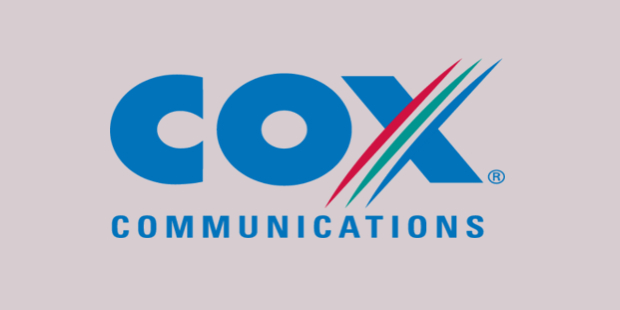
………………………………………………………………………………………………………………………………………………………………………………………………………………
References:
https://www.lightreading.com/cable-tech/cox-sets-path-to-10g-/d/d-id/775402?
Cox Plans Multi-Billion Dollar Symmetrical Multi-Gigabit Upgrade
Cable One joint venture to expand fiber based internet access via FTTP
KDDI claims world’s first 5G Standalone (SA) Open RAN site using Samsung vRAN and Fujitsu radio units
Japan’s KDDI is claiming to have turned on the world’s first commercial 5G Standalone (SA) Open Radio Access Network (Open RAN) site, using equipment and software from Samsung Electronics and Fujitsu. KDDI used O-RAN Alliance compliant [1.] technology, including Samsung’s 5G virtualized CU (vCU) and virtualized DU (vDU) as well as Fujitsu’s radio units (MMU: Massive MIMO Units).
Note 1. O-RAN Alliance specifications are being used for RAN module interfaces that support interoperation between different Open RAN vendors’ equipment.
The first network site went live in Kawasaki, Kanagawa today. KDDI, together with its two partners, will deploy this Open RAN network in some parts of Japan and continue its deployment and development, embracing openness and virtualization in KDDI’s commercial network. Note that both Rakuten-Japan and Dish Network/Amazon AWS have promised 5G SA Open RAN but neither company seems close to deploying it.
Virtualization and O-RAN technology replaces dedicated hardware with software elements that can run on commercial off-the-shelf (COTS) servers. This brings flexibility and agility to KDDI’s network, allowing the operator to offer enhanced mobile services to its users. KDDI says this architecture will deliver reliability, while accelerating deployment of Open RAN throughout Japan, including in rural areas. Meanwhile, 5G SA will deliver superior performance, higher speeds and lower latency and make possible advanced services/applications, such as network slicing, automation, service chaining and Multi-access Edge Computing (MEC).
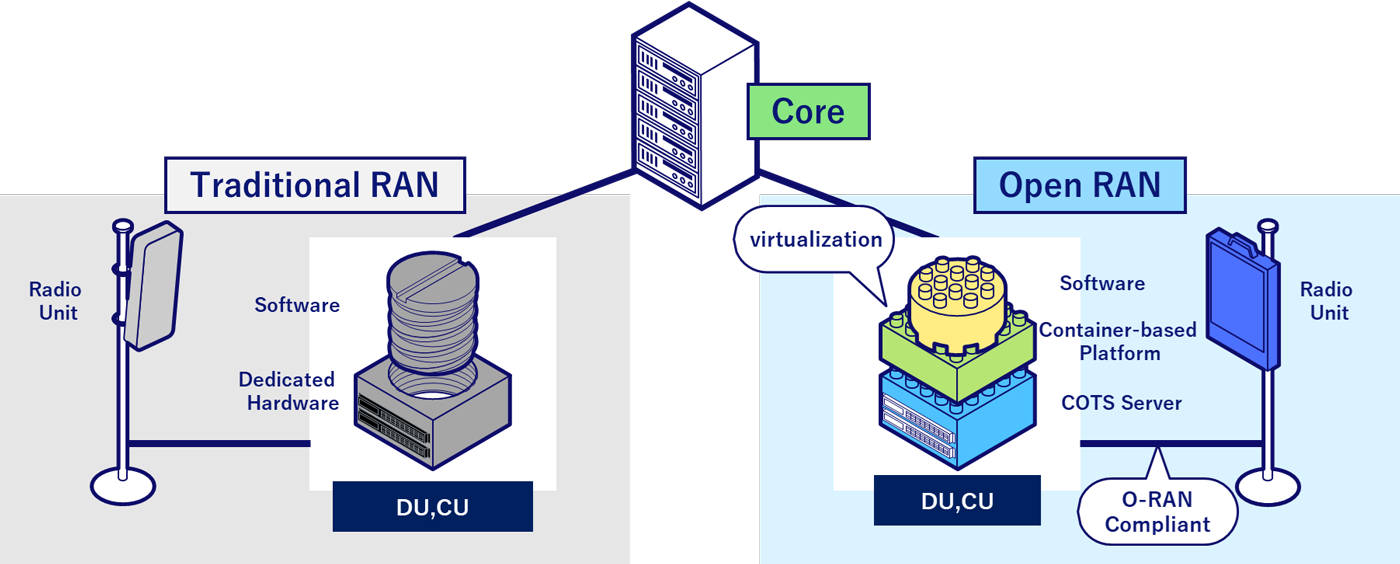
Traditional RAN vs. Open RAN Configuration. Source: KDDI
Characteristics of this site:
This Open RAN site leverages fully-virtualized RAN software, provided by Samsung, that runs on commercial off-the-shelf (COTS) servers. Furthermore, by pursuing an open network approach between radio units and baseband unit, KDDI used Samsung’s baseband and Fujitsu’s Massive MIMO Units, which are connected with an open interface.
- Fully-virtualized 5G RAN software can be swiftly deployed using existing hardware infrastructure, which brings greater flexibility in deployment. New 5G SA technologies―such as network slicing, Multi-access Edge Computing (MEC) and others―powered by 5G vRAN, will deliver superior performance, higher speeds and lower latency, allowing KDDI users to experience a range of new next-generation services and immersive applications.
- Using an open interface between radio units and baseband unit, Open RAN not only ensures security and reliability but also enables operators to implement best-of-breed solutions from different partners and build an optimal network infrastructure for maximized performance.
- The virtualized network allows the use of general-purpose hardware (COTS servers) across the country, which will greatly increase deployment efficiencies. Additionally, by leveraging system automation, fully-virtualized RAN software can reduce deployment time, enabling swift nationwide expansion, including rural areas.
Comments from Kazuyuki Yoshimura, Chief Technology Officer, KDDI Corporation:
“Together with Samsung and Fujitsu, we are excited to successfully develop and turn on the world’s first commercial 5G SA Open RAN site powered by vRAN. Taking a big step, we look forward to continue leading network innovation and advancing our network capabilities, towards our vision of delivering cutting-edge 5G services to our customers.”
Comments from Woojune Kim, Executive Vice President, Head of Global Sales & Marketing, Networks Business at Samsung Electronics:
“Leveraging our industry-leading 5G capabilities, we are excited to mark another milestone with KDDI and Fujitsu. Samsung stands out for its leadership in 5G vRAN and Open RAN with wide-scale commercial deployment experiences across the globe. While KDDI and Samsung are at the forefront of network innovation, we look forward to expanding our collaboration towards 5G SA, to bring compelling 5G services to users.”
Note: Samsung released its first 5G vRAN portfolio in early 2021 following its blockbuster RAN deal with Verizon, which was the first operator to commercially deploy the new equipment. Samsung also gained a foothold in Vodafone’s plan to deploy 2,500 open RAN sites in the southwest of England and most of Wales. Samsung’s open RAN compliant vRAN hardware and software were previously deployed in 5G NSA commercial networks in Japan and Britain, but this is the first 5G SA deployment. We wonder if it is “cloud native?” Hah, hah, hah!
Comments from Shingo Mizuno, Corporate Executive Officer and Vice Head of System Platform Business (In charge of Network Business), Fujitsu Limited:
“The Open RAN-based ecosystem offers many exciting possibilities and this latest milestone with KDDI and Samsung demonstrates the innovative potential of next-generation mobile services with Massive MIMO Units. Fujitsu will continue to enhance this ecosystem, with the goal of providing advanced mobile services and contributing to the sustainable growth of our society.”
The companies will continue to strengthen virtualized and Open RAN leadership in this space, bringing additional value to customers and enterprises with 5G SA.
……………………………………………………………………………………………………………………………………………………………………………………………………………..
Addendum: As of December 31, 2021 there were only 21 known 5G SA eMBB networks commercially deployed.
|
5G SA eMBB Network Commercial Deployments |
|
|
Rain (South Africa) |
Launched in 2020 |
|
China Mobile |
|
|
China Telecom |
|
|
China Unicom |
|
|
T-Mobile (USA) AIS (Thailand) True (Thailand) |
|
|
China Mobile Hong Kong |
|
|
Vodafone (Germany) |
Launched in 2021 |
|
STC (Kuwait) |
|
|
Telefónica O2 (Germany) |
|
|
SingTel (Singapore) |
|
|
KT (Korea) |
|
|
M1 (Singapore) |
|
|
Vodafone (UK) |
|
|
Smart (Philippines) |
|
|
SoftBank (Japan) |
|
|
Rogers (Canada) |
|
|
Taiwan Mobile |
|
|
Telia (Finland) |
|
|
TPG Telecom (Australia) |
|
SOURCE: Dave Bolan, Dell’Oro Group.
…………………………………………………………………………………………………………………………………………………………………………………………………………………………………….
References:
https://news.kddi.com/kddi/corporate/english/newsrelease/2022/02/18/5896.html
Samsung Electronics wins $6.6B wireless network equipment order from Verizon; Galaxy Book Flex 5G
Mobile Core Network (MCN) growth to slow due to slow roll-out of 5G SA networks
Nokia survey finds CSPs are not monetizing 5G services- BSS must be improved
A Nokia-commissioned survey of 100 communication service providers (CSPs) around the world found only 11% have sufficient Business Support Systems (BSS) in place for effective 5G monetization. Yet this author believes such BSS are not the key issue in monetizing 5G. The IEEE Techblog which has repeatedly stated there are currently no compelling 5G use cases without URLLC in the RAN/core and cloud native 5G SA Core networks deployed. Also, a cloud-native software architecture is key to achieving a 5G-ready monetization system, with many benefits that include limitless scalability, and an ideal platform for AI, analytics, and edge computing capabilities for ultra-low latency use cases.
An overwhelming number of survey respondents, at 98%, indicated they would have to alter their BSS in the coming years in order to put proper, up-to-date monetization tools in place.
The survey also found that nearly 70% of CSPs are now considering deploying cloud-based monetization solutions. In addition, two-thirds of respondents indicated they believe that real-time charging is essential for 5G monetization, in part because of its ability to help CSPs respond quickly to customer demands.
More details on the research can be found here.
John Abraham, Principal Analyst at Analysys Mason, said: “Most Service Providers are ill-prepared to effectively engage and monetize emerging 5G-enabled use cases and need to urgently transform their BSS. With Service Providers looking to get that ROI on 5G, now is the time for them to invest in flexible monetization systems especially as 5G brings to the forefront the importance of real-time charging capabilities. Given Nokia’s portfolio and expertise, they are well placed to support CSPs on this journey.”
Hamdy Farid, Senior Vice President, Business Applications at Nokia, said: “To unlock 5G revenues and move beyond the traditional data plan model, a major shift among CSPs is needed toward adaptable monetization systems that utilize cloud-native, scalable and flexible infrastructure and open APIs for easy integration and deployment; and I think this survey highlights the work still to be done.”
…………………………………………………………………………………………………………………………………………………………………….
Nokia’s Head of Digital Business within CNS Jonah Pransky shared with RCR Wireless News that moving to cloud-native BSS “is becoming increasingly important to ensure greater business agility.”
“This is particularly true when it comes to efficiently monetizing 5G and capturing new revenue streams that 5G makes possible, including differentiated pricing, network slicing, and flexible product offerings, such as IoT and B2B2X. The 5G Standalone [SA] network is built on cloud-native network functions that provide the flexibility and agility to define, create and launch new services faster than ever before. 5G monetization systems, starting with the 5G charging function, need to be based on the same agile technology, or risk becoming a bottleneck in the release of new offers to the market, and ultimately slow the ROI that service providers must see sooner rather than later.”
Pransky also indicated that real-time charging is important for 5G-ready monetization systems, but provided a longer view of what capabilities are necessary, including support for open APIs, the enablement of new network-sliced based services easily and efficiently, meeting the CX demands of digital users for simple, transparent digital first commerce and finally, and being designed with no-code configurability.
While CSPs are still behind in their 5G monetization journeys, Pransky said that because the industry is moving away from large software monoliths and towards modular microservices-based applications, there is an opportunity for service providers to take a phased approach to transforming their monetization systems for 5G.
“That means they can begin with the most urgent need, which in this case is the 5G Converged Charging system,” he continued. “There is definitely still time with the roll out of 5G SA accelerating in some regions, but with many still only beginning to prepare for this. The advice [Nokia] would give would be to look for a monetization partner that has actual experience implementing 5G Charging in 5G SA networks in order to avoid potential pitfalls and hit the ground running, prepared for what will be necessary for effective monetization.”
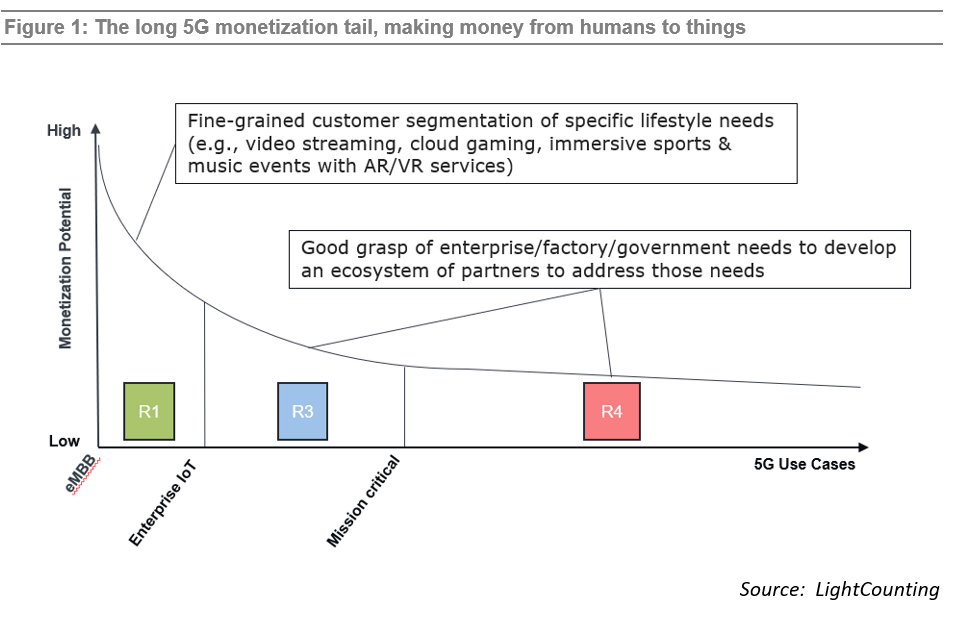
…………………………………………………………………………………………………………………………………………………..
References:
CSPs are behind in 5G monetization, according to Nokia survey
https://www.rajarshipathak.com/2020/01/requirements-for-5g-network-monetization-solution.html
FEMA Awards AT&T 4 EIS Contracts to Modernize Its Communications Capabilities
The U.S. Department of Homeland Security Federal Emergency Management Agency (FEMA) awarded AT&T* four separate contracts for modernized communications capabilities to help FEMA improve its ability to deliver its mission to help people before, during, and after disasters. The four Task Orders, awarded via the General Services Administration’s Enterprise Infrastructure Solutions (EIS) contract, are valued at more than ~$167 million over five years if all options are exercised.
Timely, accurate communications are mission-critical for FEMA. In awarding these agreements, FEMA selected AT&T as its single integrated communications provider for the vast majority of its telecommunications services. These awards allow FEMA to identify and acquire advanced communications capabilities quickly and efficiently.
What is the scope of capabilities AT&T will provide to FEMA?
Under these four awards, AT&T will transition FEMA voice and data systems, wireless LAN capabilities, Contact Center Capability Modernization Program (C3MP), and The National Warning System from legacy technologies to modernized communications in accordance with EIS guidelines on a timeline directed by FEMA.

As an existing FirstNet® subscriber, FEMA can use FirstNet’s wireless capabilities for redundant or alternate access to these data networks. Built with AT&T in partnership with the federal government, FirstNet provides first responders with truly dedicated coverage and capacity when they need it, unique benefits like always-on priority and preemption, and high-quality Band 14 spectrum.
Voice/Data:
AT&T will collaborate with FEMA to modernize the FEMA network. AT&T will provide FEMA a voice and data solution that reduces the agency’s enterprise network footprint; lowers management and maintenance resource support costs; increases security and availability; and provides a platform for future scalability, transformation, and modernization options. The solution also offers a flatter network topology (Layers 2 and 3) to enhance and simplify network monitoring.
Wireless WAN (Wi-Fi):
AT&T will continue to provide FEMA with a fully managed solution while moving existing billing to the new EIS contract. Following that, AT&T will collaborate with FEMA to modernize the solution, bringing technologies like Wi-Fi 6 and other enhancements to the forefront of the FEMA mission.
National Warning System (NAWAS):
AT&T will transition the NAWAS legacy technologies to newer services available via EIS through a well-planned, phased, cost-effective, and non-disruptive approach to the new solution with government oversight.
Contact Center Modernization:
The FEMA C3MP system provides contact center services for FEMA’s contact centers servicing all inbound calls from disaster survivors to approximately 1,600+ call centers and surge or overflow agents at three primary locations, additional sites, and telework locations nationwide. It also supports more than 200 technical staff and FEMA Finance Center agents.
AT&T will provide FEMA a protected, resilient, survivable, and recoverable contact center solution as well as a path to migrate C3MP to the cloud.
Here’s what people are saying:
Stacy Schwartz, Vice President, Public Sector and FirstNet, AT&T
“The FEMA mission is noble in intent, expansive in reach, and complex in delivery. As climate events and their impacts continue to increase in number and scope, more and more U.S. citizens turn to FEMA for help. We’re proud to stand beside FEMA and modernize its communications capabilities now and for the future.”
When does the work begin?
AT&T is already working with FEMA to transition the agency’s voice and data systems, wireless LAN capabilities, C3MP contact center system, and the National Warning System.
About FEMA
Officially created in 1979 via Executive Order by then-President Jimmy Carter, The Federal Emergency Management Agency (FEMA) today employs more than 20,000 people nationwide to help people before, during, and after disasters. Headquartered in Washington, D.C., FEMA has 10 regional offices located across the country and uses its tremendous capacity to coordinate within the federal government to help ensure America is equipped to prepare for and respond to disasters.
Where can I find more information?
Go here for more information about AT&T’s work in the public sector, or visit FEMA online here.
References:
Juniper Networks, Vodafone and Parallel Wireless in RIC Open RAN Trial
Juniper Networks is working with Vodafone and Parallel Wireless, a pioneer in Open RAN solutions, conducting a multivendor RAN Intelligent Controller (RIC) trial for “tenant-aware admission control” use cases. The trial, initially running in Vodafone’s test labs in Turkey and with plans to move into its test infrastructure, supports O-RAN interfaces and addresses the key business challenges faced by mobile operators around personalized user experience, viable revenue generation and reduction in both CAPEX and OPEX for 4G and 5G services.
The trial is based on an open, software-driven architecture that leverages virtualization to deliver more programmable, automated granular-by-user traffic management. The initial focus is on delivering tenant-aware admission control capability, enabling operators to personalize services and provide superior user experiences. Real-time tracking and enforcement of radio resources across the RAN enables mission-critical users – for example, hospitals and schools – to receive prioritized mobile data services delivery. This capability is enabled by Juniper’s rApp/xApp cloud-based software tools that manage network functions in near real-time, along with Parallel Wireless cloud-native Open RAN functions.
The trial’s design philosophy is focused on demonstrating the potential of enabling open, agile resource management and mobile data delivery in any software-driven RAN environment. This approach enables services and applications to be managed, optimized and mitigated automatically by the RAN, built on real-time data insights from its own performance.
All three organizations are active operators/contributors of the O-RAN ALLIANCE and the Telecom Infra Project (TIP), underlining their shared commitment to industry innovation and standards.
Juniper’s RIC solution is architected as an open platform supporting open interfaces on the north bound and south bound side, enabling easier integration with Open RAN partners in the ecosystem. Juniper’s RIC platform will also enable easy integration of third-party rApps/xApps, using UI-based onboarding and deployment tools coupled with flexibility to select between either network-based or SDK-based APIs (Application Programming Interfaces).
Parallel Wireless brings cloud-native Open RAN solutions – which are now integrated with the leading-edge RAN Intelligent Controller (RIC) based on O-RAN ALLIANCE specifications from Juniper Networks, giving operators more choices to build the best-of-breed RAN.
In January 2022, Vodafone announced that it had teamed with Samsung Networks Europe to switch on the UK’s first Open RAN site to carry live 5G traffic, marking a milestone in the commercial deployment of Open RAN network architectures in Europe, with more than 2,500 additional sites to follow.
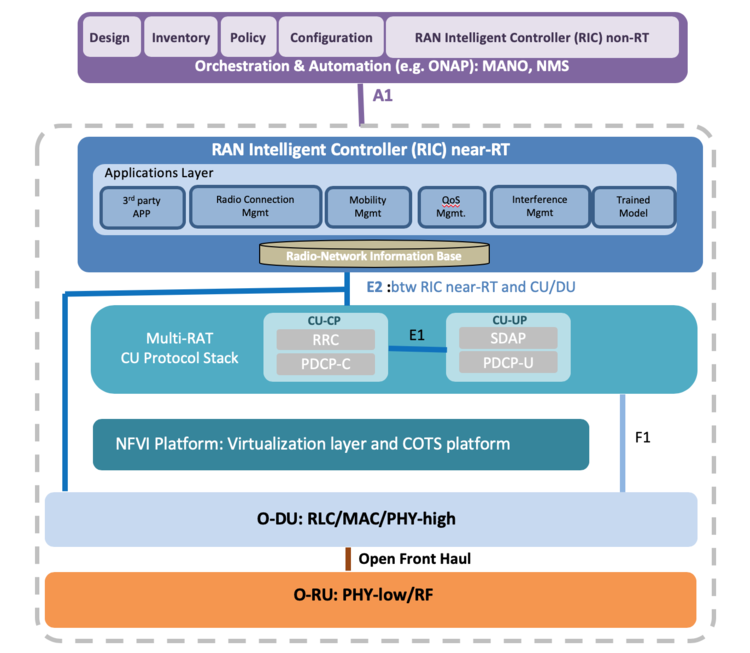
Source: The Fast Mode
……………………………………………………………………………………………………………………………………………………………………………
Supporting Quotes:
“Vodafone has a clear vision that all mobile network radio infrastructure should be open – enabling rapid adoption of innovative services. We see this as a key stepping stone to rich innovation and collaboration, the only way that groundbreaking new use cases in 4G and 5G can be developed and cost-effectiveness maximized. In order to accelerate progress in this exciting journey, I am very pleased that Vodafone is hosting a lab and field trial for tenant-aware admission control using O-RAN interfaces, alongside an ecosystem of like-minded technology partners, including Juniper Networks and Parallel Wireless. By working together, we will be able to build smarter networks, better user experiences and drive stronger sustainability measures for B2B use cases.”
– Paco Martin, Head of Open RAN at Vodafone Group
“This multivendor trial at Vodafone has provided the perfect opportunity to demonstrate how Juniper’s RIC, and our focus on enabling seamless application portability, are able to unlock the true potential of Open RAN. By coupling our innovations with those of Parallel Wireless and Vodafone’s operational experience, we are able to achieve a real-world use case that can deliver value and better user experiences with improved economics for operators.”
– Constantine Polychronopoulos, VP, 5G & Telco Cloud at Juniper Networks
“Vodafone has been leading in Open RAN innovation since the early days. As the next stage of Open RAN adoption we are excited to partner with Vodafone and Juniper Networks, integrating our state-of-the-art cloud-native, O-RAN ALLIANCE compliant, Open RAN solutions with the leading edge RAN Intelligent Controller from Juniper. ”
– Keith Johnson, President at Parallel Wireless
Heavy Reading Comments about RIC:
According to Heavy Reading analyst Gabriel Brown, wireless network operators this year will likely be testing RIC technology in the field. He doesn’t expect full-blown products until the end of this year at the earliest. Vendors in the space range from Juniper Networks to VMware to some open source offerings from the likes of the Open Networking Foundation (ONF).
RICs could eventually replace self-organizing networks (SON) in classic RAN architectures. RICs help control base stations from a variety of vendors. Specifically, they can support various dynamic networking features such as switching off radios during non-peak times to cut energy costs. As a result, RICs are key to Open RAN which facilitates the mix and match network elements/base station modules from different vendors, rather than being locked into a tightly integrated stack of components supplied by just one vendor.
RICs come in two flavors: near-real time RICs and non-real time RICS. Brown expects most of the early RIC deployments to be of the non-real time variety because those specifications are farther along and less tightly coupled with the control of baseband scheduling.
About Juniper Networks:
Juniper Networks is dedicated to dramatically simplifying network operations and driving superior experiences for end users. Our solutions deliver industry-leading insight, automation, security and AI to drive real business results. We believe that powering connections will bring us closer together while empowering us all to solve the world’s greatest challenges of well-being, sustainability and equality. Additional information can be found at Juniper Networks (www.juniper.net) or connect with Juniper on Twitter, LinkedIn and Facebook.
Juniper Networks, the Juniper Networks logo, Juniper, Junos, and other trademarks listed here are registered trademarks of Juniper Networks, Inc. and/or its affiliates in the United States and other countries. Other names may be trademarks of their respective owners.
References:
https://www.juniper.net/us/en/research-topics/what-is-ric.html
https://www.lightreading.com/open-ran/growth-in-ric-how-open-ran-could-get-smarter/d/d-id/775108
Juniper to integrate RAN Intelligent Controller with Intel’s FlexRAN platform for Open RAN
Additional Resources:
YouTube: RAN Intelligent Controller (RIC) – Unlocking the True Potential of O-RAN
Open RAN Solutions: Juniper Networks
Research Topic: What is a RAN Intelligent Controller?
European Union plan for LEO satellite internet system
The European Union is considering revised plans for a low-Earth orbit (LEO) satellite internet system that would take on SpaceX/Starlink, OneWeb, Amazon Kuiper, Telesat and other LEO satellite internet players in a bid to lessen Europe’s reliance on US technology for secure connectivity, the Financial Times reports (paywall applies). The Secure Communications Initiative, as the proposed system is called, is the brainchild of Thierry Breton, the EU’s internal market commissioner, who wants the bloc to build a third satellite constellation for secure Internet access. The EU already has the Galileo system for navigation and Copernicus for Earth observation. Similar proposals have already been rejected twice, says the report, but Breton is hoping these amended plans will be able to snake their way through the EU’s notoriously slow-moving internal approvals process.
Breton told a press conference in Strasbourg on Tuesday: “This is of central importance in terms of our strategic and technical sovereignty.” He added that it would be connected to other unnamed satellite constellations to save money. Regarding obtaining the spectrum to broadcast the signals, he said: “We know where to find this frequency. It is not an issue.”
Context of the Proposal- from the Explanatory Memorandum:
The general objective of this proposal is to establish a Union secure satellite communication system (hereafter the ‘Programme’) that ensures the provision of worldwide secure, flexible and resilient satellite communication services to the Union and Member States governmental entities. Satellite communications provide ubiquitous coverage, which is complementary to terrestrial networks (ground-based in a digital communication in areas where terrestrial networks are absent (e.g. oceans, during flights, or in remote locations / islands with no cellular or broadband coverage), have been destroyed (e.g. during flooding events, or forest fires) or where local networks cannot be trusted (in crisis situations, or for diplomatic services in third countries or for sensitive governmental operations).
The signals from the new system would be encrypted and offered to Europe as well as Africa to give that continent an alternative to Chinese-built infrastructure. It would also provide a back-up in case of cyber attacks on broadband networks.
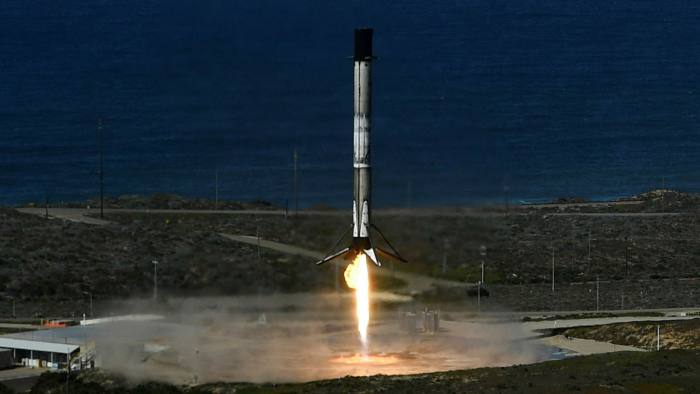
The reusable first stage of a SpaceX Falcon 9 rocket returns to land after deploying a satellite this month. The EU wants its own sovereign satellite internet system © Patrick T Fallon/AFP/Getty
References:
https://www.ft.com/content/329d7c77-b4fe-4753-910b-60a4a29eb436




